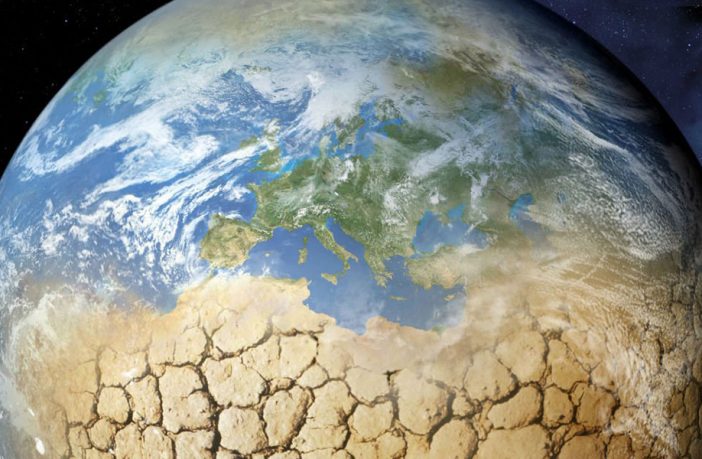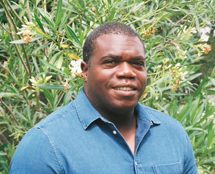Opinion
We have had hundreds, if not thousands, of warnings on the climate crisis that have gone in one ear and out the other, with zero impact on policies. And if you don’t believe the science, nature has served us a growing series of flashing red lights, from Texas to California to Madagascar to Turkey to Greece to Germany to Belgium to Cape Town and Lagos.
A code red for humanity. That is how UN Secretary-General António Manuel de Oliveira Guterres described the Intergovernmental Panel on Climate Change’s (IPCC’s) Sixth Assessment Report (AR6), which was published on 9 August 2021. US President Joe Biden’s climate czar said that the report underscores the “overwhelming urgency of this moment”.
The IPCC’s AR6 was prepared by 234 scientists from 66 countries. They pored over 14,000 scientific papers before confirming the following: “It is ‘unequivocal’ that human influence has warmed the global climate system.”
The AR6 has enjoyed blanket wall-to-wall coverage in all the major news outlets around the world, from Chile to New Zealand and from the US to Japan — maybe a sign that people are finally ready to consume primetime news about the environment.
Key headline statements of the AR6 include the following:
- Anthropogenic climate change is already affecting many weather events across the globe;
- Six different scenarios studied by the panel all confirm that global surface temperatures will continue to increase until at least mid-century;
- Global warming will cause changes in climate systems to increase. Here we are talking about increases in the frequency and intensity of hot extremes, marine heatwaves, heavy precipitations, agricultural and ecological droughts, intense tropical cyclones and reduction in Arctic sea ice, snow cover and permafrost;
- Under most scenarios studied, increased CO2 emissions will cause ocean and land carbon sinks to become less effective; and
- Every region is projected to increasingly experience multiple concurrent changes in climatic impact drivers. These climatic impact drivers will grow in intensity with increases in global surface temperature.
Concerning Africa specifically, the AR6 states that “the rate of surface temperature increase has generally been more rapid in Africa than the global average, with human-induced climate change being the dominant driver (high confidence)”.
Another alarming reminder for Africa is that “relative sea-level rise is likely, to virtually certain, to continue around Africa, contributing to increases in the frequency and severity of coastal flooding in low-lying areas to coastal erosion and along most sandy coasts (high confidence)”.
The city of Lagos was exposed to this scenario a few weeks ago after heavy rains left parts of Nigeria’s economic capital underwater. The entire city may be completely underwater in another couple of decades.
Although the IPCC’s work is finally getting the attention it deserves, I cannot help but wonder: how many code reds do we need? How many times do we need to be reminded that we have reached the tipping point?
I don’t know about you, but I do not feel very optimistic about the major economies’ ability to adopt bold decisive measures to combat global warming.
I feel even less optimistic about African leaders’ ability to hold them to account. In fact, how many of them have issued a statement following the publication of the AR6?
We have had hundreds, if not thousands, of warnings that have gone in one ear and out the other, with zero impact on policies.
Earlier this year, the United Nations Environmental Programme’s Making Peace with Nature report reminded us that environmental changes are bringing heavy economic costs and millions of premature deaths annually and we need to urgently tackle these problems together to ensure the wellbeing of current and future generations.
In May 2021, the International Energy Agency’s Net Zero by 2050 report indicated that “the energy sector is the source of around three-quarters of greenhouse gas emissions today”. They added unequivocally that capping emissions below 1.5°C “calls for nothing less than a complete transformation of how we produce, transport and consume energy”.
As if to lend a helping hand to the scientists, lest we keep pretending that all is fine in the best of all possible worlds, nature has served us a growing series of flashing red lights, foreseeable unfortunate events if you will.
In February, a cold snap froze and collapsed Texas’ power lines, leaving millions without electricity for weeks. Parts of the Lone Star State in the US are still without electricity.
This year has seen another round of costly and deadly fires all across the globe (South Africa, Turkey, Greece, the US, Russia, etc). The fires have consumed libraries (Cape Town), entire cities (Dixie, California), and forests and towns (Turkey, Greece).
An unprecedented drought has scorched southern Madagascar and left millions of people relying on the UN for food. To survive, hungry and desperate families have been eating wild cactus fruit and boiling shoe leather.
A heat dome in the Pacific Northwest (North America) caused temperatures to surge to the mid-40s and claimed several dozen lives.
Only a few weeks ago, Germany and Belgium suffered unprecedented floods that claimed more than 300 lives and wiped out entire villages. Witnesses described a biblical event almost, with walls of water as high as 10 metres slamming into their homes. Germany alone needs €30-billion to rebuild the homes and services destroyed during the flood. The event has left Armin Laschet, the First Minister of the most affected state, North Rhine-Westphalia (and Angela Merkel’s putative successor), reeling in the polls.
The Colorado River has dipped to unprecedented lows after parts of the US-Mexico border area suffered their driest 12-month period on record. This is certain to devastate farming in the area as well as tourism, which usually attracts up to four million visitors per year to the area.
That said, there is a glimmer of hope beyond all the gloom. Almost all countries have signed up to the 2015 Paris climate accord. This means that almost all countries on the planet agree that we need to cut CO2 emissions by at least 50% compared with 2010 levels in order to limit global heating to 2°C.
Now, to the more important part of translating those promises into actions
Author: Dr Roland Ngam
Dr Roland Ngam is programme manager for climate justice and socioecological transformation at the Rosa Luxemburg Foundation, Southern Africa.The views expressed are not necessarily those of the Rosa Luxemburg Foundation.
Disclaimer: The articles expressed in this publication are those of the authors. They do not purport to reflect the opinions or views of Green Building Africa, our staff or our advertisers. The designations employed in this publication and the presentation of material therein do not imply the expression of any opinion whatsoever on the part Green Building Africa concerning the legal status of any country, area or territory or of its authorities.
















